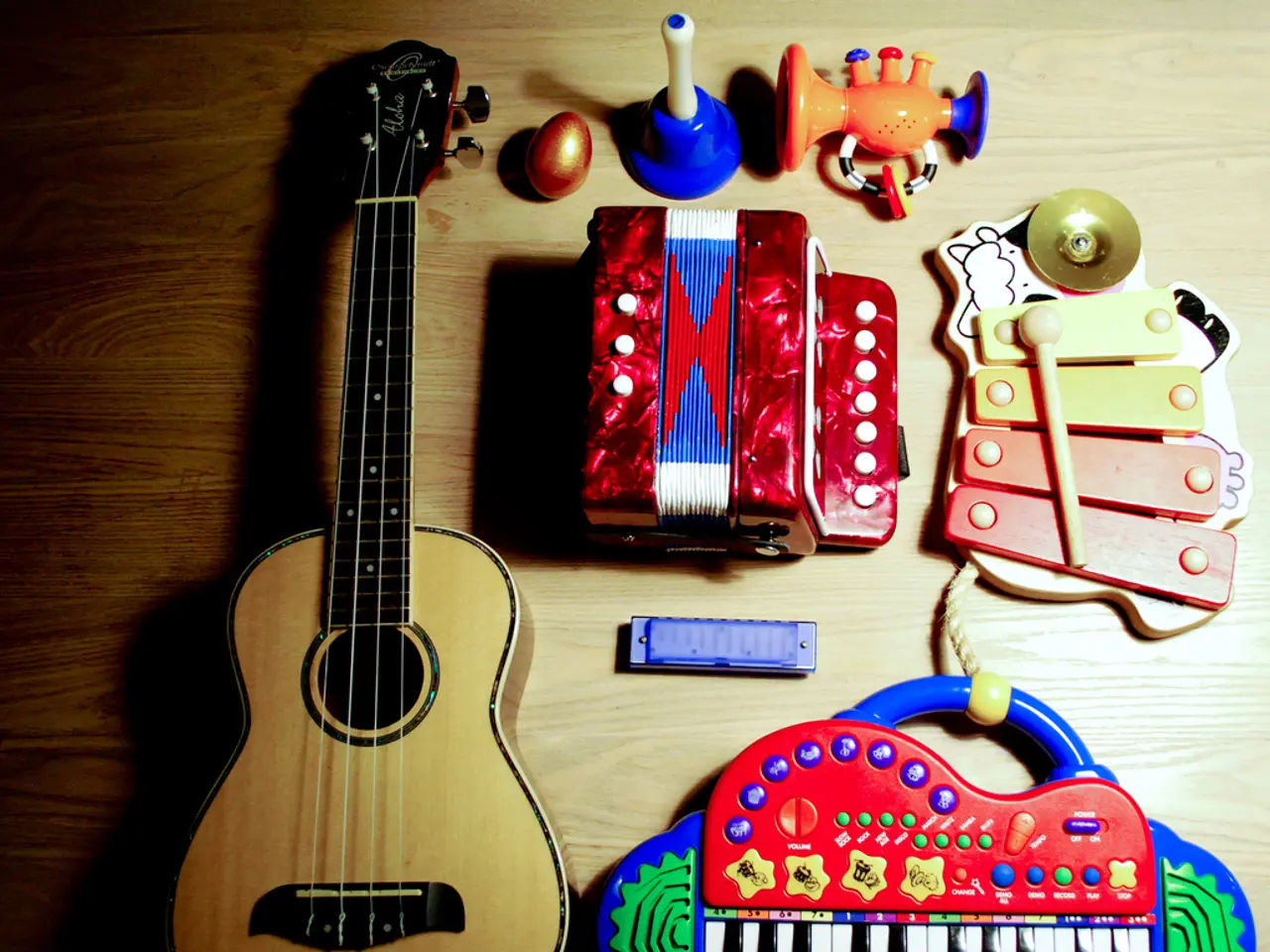Guide to Installing a Turntable for Optimal Audio Quality
Setting Up Your Record Deck: A Beginner's Guide
Setting up a record deck can be an exciting journey, but it's essential to follow some basic steps to ensure optimal sound quality and the longevity of your records. Here's a step-by-step guide to help you get started.
The Necessities
A decent tool-kit is necessary for setting up most record decks. You'll need small long-nose pliers, a gauge for aligning the cartridge, and a pair of bolts to hold the cartridge in place. Most turntables come with a pre-fitted tonearm, and some may require assembly as you move up in price.
Careful Handling
Be careful when connecting the thin, fragile arm wires to the cartridge to avoid damaging the connectors or breaking the wires. Errors as small as a degree in cartridge alignment can lead to large rises in distortion.
Setting the Tracking Weight
The down-force should be set according to the cartridge manufacturer's recommendation. This value is usually between 1.5 and 2.5g, with a specific weight listed as most ideal. The tracking weight (also referred to as tracking force) is adjusted by moving a counterweight at the rear of the tonearm. If the tracking weight is set too high, the sound becomes dull and ponderous. Too low, and the presentation turns thin, and the cartridge won't track the groove properly.
Alignment and Bias
A gauge is often provided to align the cartridge, which involves getting the cartridge body square to printed parallel lines. The last adjustment on the tonearm is that of bias, which is a sideways force on the cartridge to balance out the inward pull of the record groove.
Choosing the Right Support
To reduce unwanted vibration, prioritize a heavy, well-built plinth (the base) and platter. Vibration-absorbing or height-adjustable feet are essential to further reduce external vibrations transmitted to the turntable. Place the turntable on a level, sturdy furniture to avoid wobbling or shaking during playback.
Matching with Your Hi-Fi System
When adding a new turntable to a hi-fi system, it's important to consider how the new turntable will match with the sonic characteristics of the other components currently in the set-up.
Amplification and Equalisation
A phono stage provides extra amplification and equalises the tonal balance. Even if a phono stage is included in a turntable, it's often an afterthought and may not maximise sound quality. A good phono preamplifier is necessary for optimal sound quality from a record player.
Fine-Tuning Performance
It's possible to fine-tune performance by altering the tonearm height. Counter-intuitively, if in doubt, go a touch heavier (but not Crosley heavy). Affordable record players such as the Pro-Ject Primary E and Rega Planar 1 come with the arm and cartridge attached and adjusted.
Picking the Right Record Player
Some decks respond well when placed on heavy supports, while others prefer lighter alternatives. The ideal support for a record player should be level, low resonance, and positioned far from sources of vibration. Many modern record players have the cartridge fitted into a removable headshell, making it easier to swap cartridges out.
Examples of Quality Record Players
The Sony PS-LX310BT is a solid entry-level record player that requires little setup. The Rega RP3/Elys2 is a timeless turntable example and a recipient of multiple awards. The best record players can provide a listening experience that surpasses digital.
Auditioning Before Buying
It's always a good idea to audition products from a retailer before buying to ensure you're happy with the sound quality and overall performance.
- To enhance the sound quality of your record deck, consider investing in a good phono preamplifier for optimal sound quality from a record player.
- The ideal support for a record player should be level, low resonance, and positioned far from sources of vibration, making it easier to swap cartridges out.
- Affordable record players such as the Pro-Ject Primary E and Rega Planar 1 come with the arm and cartridge attached and adjusted, allowing for fine-tuning of performance by altering the tonearm height.
- Be mindful of the sonic characteristics of your hi-fi system when adding a new turntable to ensure a harmonious blend of sound quality.
- When connecting the thin, fragile arm wires to the cartridge, handle them carefully to avoid damaging the connectors or breaking the wires.
- A decent tool-kit is necessary for setting up most record decks, including small long-nose pliers, a gauge for aligning the cartridge, and a pair of bolts to hold the cartridge in place.
- The Sony PS-LX310BT is a solid entry-level record player that requires little setup, reducing the hassle for those new to the world of record players, while the Rega RP3/Elys2 is a timeless turntable example and a recipient of multiple awards.




